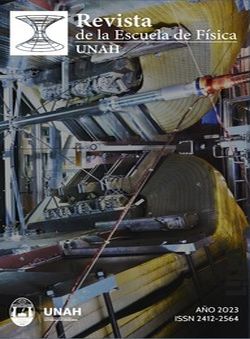Analysis of the abundances, time series, and spatial distribution of SO2 over Guatemala based on observations from the OMI/AURA satellite detector from the period 2005-2021
DOI:
https://doi.org/10.5377/ref.v11i1.16744Keywords:
Atmosphere, pollution, sulfur dioxideAbstract
The behavior of SO2 in the Planetary Boundary Layer (PBL) over the territory of Guatemala is studied. This gas has highly polluting effects on the atmosphere, air quality, and climate change. A study on the abundance, trends, and spatial distribution of this pollutant has not been conducted in Guatemala. Abundance data from the Aura satellite’s OMI detector are analyzed for the period 2005-2021. The analysis is performed by dividing the territory into two regions, North and South, and evaluating each region during the two climatic seasons in the country, winter and summer. It is found that for the North region, abundances over time remain within a range of 1,114 DU and 1,144 DU, while for the South region, abundances vary between 1,282 DU and 1,366 DU during the analyzed period. In the South region, no dependence on the climatic season is found, unlike the North region, where it is evident that abundance tends to increase in winter and decrease in summer. The South region exhibits a declining trend until the year 2010, followed by a steady increase until the year 2021. Cyclicities in abundance are analyzed, revealing distinct periods of 182 and 8 days, respectively. The spatial distribution of abundances is observed to be oriented towards the Southern region of the country throughout the study period.
Downloads
290
Downloads
Published
How to Cite
Issue
Section
License
Copyright (c) 2023 Revista de la Escuela de Física

This work is licensed under a Creative Commons Attribution-NonCommercial 4.0 International License.
© Revista de la Escuela de Física




